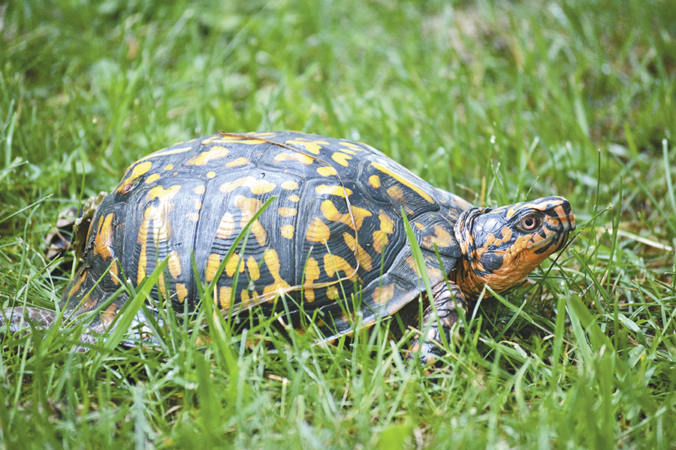“Slow and steady.” No, this is not a story about our over 50 outdoorsmen, although being slow and steady in most hunting situations probably pays off. Rather this piece is about some of our slowest and often stationary critters that we often overlook; I’m talking about turtles. One of the reasons I enjoy the outdoors so much is the opportunity to observe the great variety of wildlife Pennsylvania has to offer. Sure, looking at a trophy buck through my rifle scope on the opening day of deer season is a bit more exciting than watching a turtle sitting on a log on a warm summer evening, but it’s still part of the outdoor experience.
Turtles get very little attention. I suppose this a lot has to do with the fact that they are so often stationary, and unless one is crossing the road in front of us, we probably don’t even notice them; that’s especially true of our largest species-the snapping turtle. The snapper is easily recognized by its large head, small plastron, and long saw-toothed tail. The snapper is often described as having a long tail and a short temper; very true since its powerful jaws could probably take off a finger or at the least produce a serious injury. Known for their bad temper, most people don’t attempt to handle them. Part of what prompted me to pursue this story is that over the past few weeks, I have spotted two dead snappers along the edge of roads; my guess is they were intentionally run over by folks who don’t like them; one thing’s for sure-they didn’t bolt out in front of oncoming traffic. While snappers are probably the least admired turtle, they can also provide an excellent tasting meal, but that’s a story for a later article.
Other commonly seen turtles that, if you are looking for them, are the Eastern Painted Turtle and the Midland Painted Turtle. They are very similar in appearance, and I won’t get into the minor differences here, but they both like the same habitat. These turtles have smooth, unkeeled shells with red, yellow, and black or olive colors, and they are found in and around shallow water like shallow bogs or ponds. Shallow, quiet water with logs lying above the surface are a good place to spot these turtles. These turtles quickly came to mind because of the large numbers I’ve been seeing this year as I frequently crossed a weed-infested bog with several log structures laying on the surface; the logs were literally covered from end to end with sitting turtles. On one occasion, I counted over 70 turtles positioned on the protruding logs.
Another turtle that you may spot if you are looking is the Eastern Box Turtle. Unlike the painted turtle, the box turtle is more dry land oriented and is often seen making its way through a wooded area. It has a high, dome-like shell with variable coloration, including yellow, orange, and olive, black or brown. The box turtle population is believed to have dropped by about a third, and they are now considered a vulnerable species. I have spotted them in woodland settings a few times over the past few years, but I seldom come across them.
While I have mentioned three common species of turtles here, the fact is, Pennsylvania actually has 13 or 14 different species-some are very uncommon. Other turtles that may show up are the Northern Map Turtle, Eastern Musk Turtle, Wood Turtle, Bog Turtle, and several more. Keep your eyes open for a turtle sighting, and be prepared if one bolts across the road in front of you.





Leave a Comment
Your email address will not be published. Required fields are marked with *